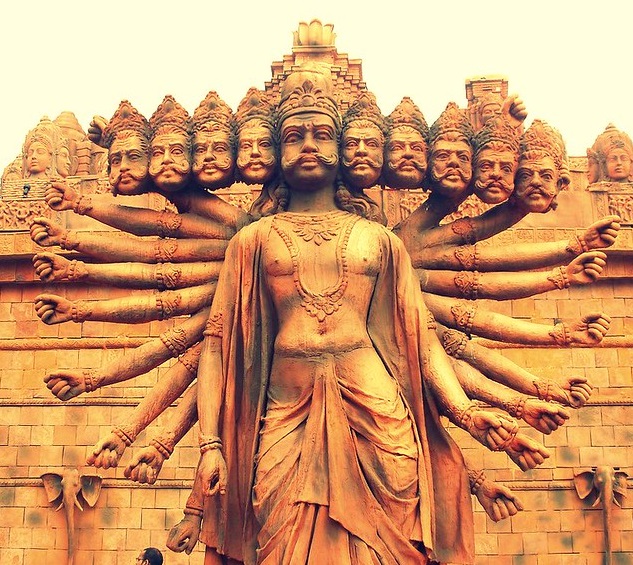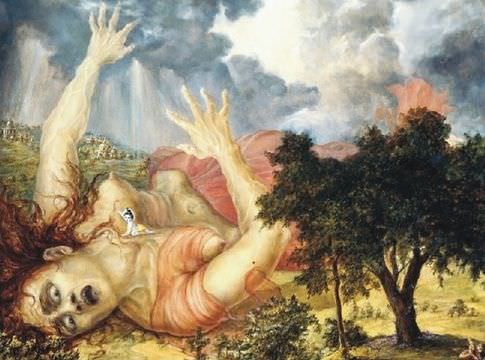Shani Shingnapur Temple is a popular temple of Lord Shani, the Hindu god associated with the planet Saturn. It is located in the Ahamadnagar district in the state of Maharashtra. The presiding deity here is ‘Swayambhu’. This means a ‘self-evolved’ deity.
Shani Shingnapur Temple – Facts
| Deity | Lord Shani |
| Location | Shingnapur, Maharashtra |
| Entry Fee | General Darshan: Free |
| Best Time to Visit | June to December |
| Poojas | Shani Pooja and Abhishekam |
| Festivals | Shani Amavasya, Shani Jayanti |
Shingnapur is also famous for the fact that no house in the village has doors, only door frames. Despite this, the villagers did not report the occurrence of theft until 2010. Also, devotees believe that the Shani Shingnapur temple is a “jagrut devasthan” that translates into “alive temple”, meaning that the deity still resides in the temple icon. Further, villagers believe that Lord Shani punishes anyone attempting theft.
What are the timings of Shani Shingnapur Temple?
The Shani Shingnapur Temple is open all 24 hours in a day.
Here are the timings of Shani Shingnapur Temple:
| Ritual | From | To |
|---|---|---|
| Darshan | 12 AM | 12 AM |
What are the poojas and sevas at Shani Shingnapur Temple?

There are poojas and abhishekams which are conducted on a daily basis for the devotees to be a part of. The black stone signifying Lord Shani is bathed by the devotees with sesame oil.
What are the rules of Shani Shingnapur Temple?

There are certain rules one needs to follow if they want to get on the platform to worship Lord Shani in Shani Shingnapur.
- Only men are allowed on the platform to worship Shani Maharaj.
- The devotee must take a head bath and get on the platform in wet clothes.
- The devotee must be bare-headed (not wearing a cap or a covering cloth on the head).
- Collect water for the worship of Lord Shani only from the holy well.
- Devotees also use sesame oil for worship.
What is the significance of Shani Shingnapur Temple?

The significance of the Shani Shingnapur Temple is that the shrine for Shani Dev consists of a five and a half feet high black rock installed on an open-air platform, which symbolizes the godi. Unlike other pilgrimage centers, devotees here can perform pooja or abhishekam or other religious rituals themselves.
A Trishula (trident) is placed along the side of the image and a Nandi (bull) image is on the south side. In front are the small images of Shiva and Hanuman.
In the times of Acharya Udasi Baba, there would be only three people visiting the shrine. Namely, Dagdu Changediya, Hastimal Chnagediya and the mother of Badri Tokse. They too used to come only on Saturday. Now, daily there are over 13, 000 visitors.
Generally, the temple has 30–45, 000 visitors a day, which swells to around three lakh (i.e. three hundred thousand) on Amavasya (the no moon day), believed to be the most auspicious day to appease Shani.
According to a 400-year tradition, women could not enter the inner sanctum. Therefore, on 26 January 2016, a group of over 500 women, led by activist Trupti Desai, marched to the temple under the group “Bhumata Ranragani Brigade”, demanding entry into the Inner sanctum. But the police stopped them.
In a landmark judgment on 30 March 2016, the Bombay High Court asked Maharashtra government to ensure that women are not denied entry to any temple. Hence, On 8 April 2016, the Shani Shingnapur trust finally allowed the women devotees to enter the sanctum.
What is the history of Shani Shingnapur Temple?
According to history, Ahamadnagar is popular as the place of saints. Also, there are four legends around this temple. The story of the swayambhu statue handed down from generations through word of mouth goes something like this: when the shepherd touched the stone with a pointed rod, the stone started bleeding.
This surprised the shepherd. Soon the whole village gathered around to watch the miracle. On that night Lord Shanaishwara appeared in the dream of the most devoted and pious of the shepherds.
He told the shepherd that he is “Shanaishwara”. He also told that the unique looking black stone is his swayambhu form. The shepherd prayed and asked the Lord whether he should construct a temple for him. To this, Lord Shani said there is no need for a roof as the whole sky is his roof and he prefers open sky. He asked the shepherd to do daily pooja and ‘Tailabhisheka‘ every Saturday without fail. He also promised the whole village will not have to fear of dacoits, burglars, or thieves.
Which festivals are celebrated here?

Some of the festivals celebrated at Shani Shingnapur Temple are:
- Shri Shaneshchar Jayanti: This day marks the birth of Lord Shani. From ‘Chaitra Shuddha Dashami’ to ‘Chaitrya Vadya Pratipada’, continuously, the priests chant God’s name and perform the ‘Granthraj Dnyaneshwari Parayan’.
- Aashadi Ekadashi: From 1991, on Aashadi Ekadashi of every year, from Shanishingnapur to Pandarpur, Shaneshwar Palki is taken on foot with great fanfare. In this, all the trustees and devotees participate.
- Ekanaathi Shashti: Similarly, from 1991, during Ekanaathi Shashti of every year, all the trustees and devotees participate in taking Shaneshwar Palki on foot, with great fanfare, from Shanishingnapur to Paithan.
How to reach Shani Shingnapur?
Here’s how to reach Shani Shingnapur Temple:
- Air: Nearest International Airport is Chhatrapati Shivaji International Airport, Mumbai.
- Rail: The suggested railway stations are Ahamadnagar, Rahuri, Shrirampur, and Belapur.
- Road: Shingnapur is a village at a distance of 6 km from Ghodegaon on Aurangabad Ahamadnagar road in Maharashtra. It is 84 Kms from Aurangabad and 35kms from Ahamadnagar.
Where to stay near Shani Shingnapur?
Some places where one can stay near Shani Shingnapur Temple are:
- Daiwik Hotel, Shirdi near Pimplewadi road is a notable place to check-in. It offers a great dining experience and is a nice accommodating place.
- The Temple View Hotel at Nagar Manmad road is at close proximity to the temple. Travelers often also check-in for its convenient location and well-suited accommodation.
What are some places to visit nearby?
Some of the places that one can visit near Shani Shingnapur Temple are:
- Shirdi: Shirdi is around 70 km away from Shani Shinganapur which is the famous place of Shri Sai Baba. Saibaba pent most of his life in Shirdi Village. Millions of visitors visit Shirdi temple daily and take blessings from Sai Baba.
- Ajanta and Ellora: The Ajanta and Ellora caves are considered as the greatest historical monument in the Maharashtra, India; which are about 79 km southwest from Shinganapur.
- Nashik: The city of Nashik is 143 km from the Shani Shinganapur and is famous for its religious culture. There are many places to see in the Nashik city; some of which include Muktidham, Trimbakeshwar, Pandavleni Caves, Sula Vineyards, Kalaram Temple, Naroshankar Temple, Sundarnarayan Temple, Shri Kailas Math etc.









